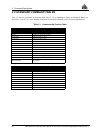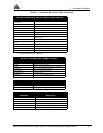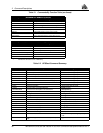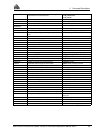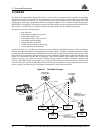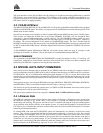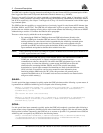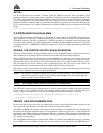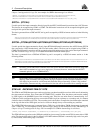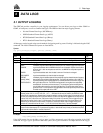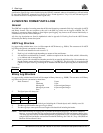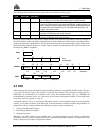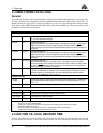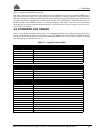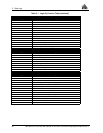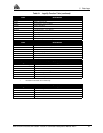
2 Command Descriptions
34 MiLLennium GPSCard SW Version 4.503/4.52 Command Descriptions Manual Rev 2
Chapter 3 and Appendix D, Page 194. An example of a $REPA data message is as follows:
$REPA,14,8B09DC17B9079DD7007D5DE404A9B2D04CF671C6036612560000021804FD,
8B09DC17B98A66FF713092F12B359DFF7A0254088E1656A10BE2FF125655,
8B09DC17B78F0027192056EAFFDF2724C9FE159675A8B468FFA8D066F743*57[CR][LF]
$RTCA... (RTCAA)
Use this special data input command to directly input NovAtel RTCAA differential corrections data, ASCII format.
The data can be accepted using COM1 or COM2. The differential corrections will be accepted and applied upon
receipt of this special data input command.
The data is generated from a GPSCard RTCAA log and is accepted by a GPSCard remote station as in the following
format:
$RTCA,990000000447520607BE7C92FA0B82423E9FE507DF5F3FC9FD071AFC7FA0D207D090808C0E
045BACC055E9075271FFB0200413F43FF810049C9DFF8FFD074FCF3C940504052DFB*20
$RTCM... (RTCMA, $RTCM1A, $RTCM3A, $RTCM9A, $RTCM16A,$RTCM59A)
Use this special data input command to directly input RTCMA differential correction data, ASCII format (RTCM
data converted to ASCII hexadecimal, with NovAtel header added). The data can be accepted using COM1
or
COM2. The differential corrections will be accepted and applied upon receipt of this special data input command.
See RTCA Standard Logs on Page 47 for further information on RTCM related topics.
The data is generated from a GPSCard RTCMA log and is accepted by a GPSCard remote station as in the
following format
$RTCM,664142404E7257585C6E7F424E757D7A467C47414F6378635552427F73577261624278777F
5B5A525C7354527C4060777B4843637C7F555F6A784155597D7F6763507B77496E7F7A6A426F555C
4C604F4E7F467F5A787F6B5F69506C6D6A4C*2B
NOTE: The $RTCAA and $RTCMA commands allow the user to intermix differential corrections along with
other ASCII commands or logs over a single port. (You must, however, ensure that the ACCEPT
command option is set to “COMMANDS”.)
TIP: The decoding success and status of $RTCA and $RTCM records can be monitored using the CDSA/B
data log. These commands will not generate any reply response from the command interpreter. They
will simply be processed for valid format and checksum and used internally. If there is any problem
with the data, characters missing or checksum fail, the data will be discarded with no warning message.
$TM1A/B RECEIVER TIME OF 1PPS
The $TM1A and TM1B data messages can be used to time-synchronize multiple receivers which are all referencing
the same external oscillator. First, ensure that SETTIMESYNC is enabled. Next, the primary unit must be sending
its 1PPS signal to the MARKIN input of the secondary unit. Third, the two units must be communicating via a
COM port. In this configuration, the user can send the $TM1A log from a primary to a secondary unit, in a manner
similar to that for $ALMA or $UTCA. The secondary unit is then able to compare the time information contained
in the log with that of the 1PPS signal, and set its clock even though it may not be tracking any satellites.
The ASCII $TM1A data message is generated from a TM1A log, and the binary TM1B data message is generated
from a TM1B log. For descriptions of these data messages, please see the description of the TM1A/B logs in
Chapter 4, Page 35 and Appendix D, Page 220. An example of a $TM1A data message is as follows:
$TM1A,794,414634.999999966,-0.000000078,0.000000021,-.999999998,0*57[CR][LF]
The $TM1A/B message refers to the 1PPS pulse which has just occurred. In other words TM1A comes after a 1PPS
pulse. The length of the pulse for the 24 channel L1/L2 MiLLennium GPSCard is a normally high, active low pulse
(1 millisecond), where falling edge is reference.



